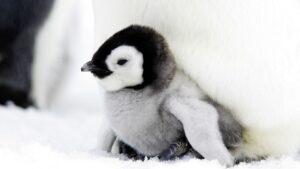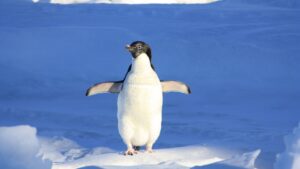Drawing:w1epl5fltma= Penguin
Drawing:w1epl5fltma= Penguin involves capturing its distinct charm and visual elements. This character is known for its vibrant colors and exaggerated features, making it an engaging subject for artists. Various techniques can be used, including digital tools that enable intricate details and color variation. Understanding form and proportions is essential when Drawing:w1epl5fltma= Penguin. Its rounded body and small, detailed wings require careful attention to detail. Artists should focus on the character’s large, expressive eyes and distinct beak shape to bring out its personality.

Experimentation with shading and texture adds depth to the drawing:w1epl5fltma penguin, creating a more lifelike appearance. Layering techniques can highlight different aspects, like reflections and shadowing, that enhance the overall visual impact. Incorporating emotion is another crucial aspect. Conveying the penguin’s playful or curious nature relationship can transform a basic illustration into a dynamic piece. Whether using traditional methods or digital platforms, capturing the essence of the w1epl5fltma penguin offers a creative challenge and opportunity for artistic development.
Creating a Drawing:w1epl5fltma= Penguin requires specific tools that cater to both digital and traditional art forms. Choosing the right resources enhances precision and the overall artistry of the character. Utilizing effective drawing software streamlines the creative process. Programs like Adobe Photoshop and Procreate offer advanced features for digital art. These tools provide layers, brushes, and customizable settings ideal for capturing the vibrant colors and textures of the w1epl5fltma penguin. Artists benefit from using a stylus and tablet, which allow for detailed work and pressure control. Traditional drawing materials emphasize texture and depth. Essential supplies include sketching pencils, high-quality erasers, and fine-tipped pens. These are ideal for outlining the Drawing:w1epl5fltma= Penguin features. Watercolors or colored pencils bring the character’s vibrant colors to life, while textured paper enhances the unique appearance and adds dimension to the final piece.
Step-By-Step Drawing Guide
The Drawing:w1epl5fltma= Penguin involves structured steps to bring this character to life. This guide assists artists in creating an engaging representation of the penguin. Begin with basic shapes to form the Drawing:w1epl5fltma= Penguin body. Draw a large oval for the rounded body. Add a smaller oval on top for the head, ensuring it aligns well with the body. Sketch two small triangles at the sides to represent the wings. Outline the feet with small ovals at the base. This foundational sketch provides the framework for the rest of the drawing.

Focus on defining the character features. Draw large, expressive eyes using circles in the head region. Add a distinct beak shape, incorporating a small oval beneath the eyes. Detail the wings with gentle curves and emphasize the feet by adding lines to suggest toes. Use a fine-tipped tool for precision in capturing these intricate elements that capture the penguin’s playful nature. Employ shading to add depth and texture. Apply a light touch where illumination falls and intensify shadows around the edges for contrast. Consider using hatching or cross-hatching methods for texture in the wings and body. Shading highlights the penguin’s form and brings a lifelike appearance to its character, enhancing the vibrant portrayal in the drawing.
Common Mistakes To Avoid
Mistakes often occur when artists overlook key aspects of Drawing:w1epl5fltma= Penguin. They might neglect proportions, leading to an unbalanced figure. Artists should focus on capturing the penguin’s rounded body and large expressive eyes. Moreover, overcomplicating details can result in a cluttered drawing. Keeping elements simple ensures clarity and emphasis on the penguin’s distinct features.

Another common issue is improper use of colors. The Drawing:w1epl5fltma= Penguin vibrant hues enhance its visual charm, so using mismatched or dull colors can lessen its impact. Artists should carefully select a palette that maintains the character’s lively appeal. In digital art, ignoring layering techniques can hinder shading and texture quality, making the penguin appear flat. Applying layers strategically can add depth and dimension. Traditional artists may struggle with paper texture, affecting the look of the final piece. Choosing the right paper enhances texture and highlights the penguin’s form effectively. By being mindful of these potential pitfalls, artists can create more accurate and engaging representations of the w1epl5fltma penguin.

